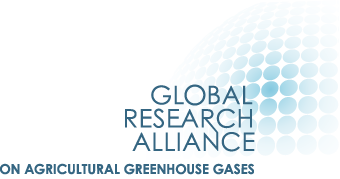Keywords: digestibility
What data needs were addressed? Estimating digestible energy when concentrate feed consists of a greater proportion of dairy cattle diet.
Why was the data needed? Dairy cattle in Slovenia are fed a greater proportion of concentrate in their diet than other types of cattle. When estimating gross energy, information on the concentration of net energy for lactation is critical to avoid under- or over-estimation of gross energy intake.
How was the data need addressed? Slovenia applies the IPCC Tier 2 model for dairy cattle, but has introduced refinements to the model and implements the model in a country-specific manner.
Step 1: Estimation of net energy requirements for the maintenance (NEm), activity (NEa), milk production (NEl) and pregnancy (NEp). These are determined following the IPCC guidance and using the default IPCC coefficients.
Step 2: Estimation of gross energy intake. For this, the concentration of net energy for lactation is estimated, considering energy concentration in the basal diet and the proportion of concentrates in the diet. The concentration of net energy for lactation in the diet was calculated as a quotient between the animal requirements for maintenance, milk production and pregnancy on the one hand and potential dry matter intake on another. National feeding standards were used to assess the requirements. Specifically, monthly milk recording data from 2000-2009 was used to construct more than 700,000 lactation curves, on the basis of which standard lactation curves at 500 kg intervals ranging between 3500 and 12000 kg were calculated. Based on daily milk yields and assumed concentrations of net energy for lactation in basal diet, the required proportions of concentrates in diets were estimated. Dry matter intake was then predicted on the basis of daily milk production, amount of concentrates and concentration of net energy for lactation in the basal diet, using equations developed by researchers in Germany (Gruber et al. 2005).
Step 3: Estimation of digestible energy: The estimated concentration of net energy for lactation was then transformed to organic matter digestibility (dOM) using an equation based on data in the German feeding tables (DLG 1997):
dOM = 24.12 + net energy for lactation × 7.9
Energy digestibility (DE%) was estimated as:
DE%= dOM 3.1
The relation was obtained on the basis of equations presented in INRA (1989).
Step 4: Gross energy intake was then calculated using Equation 10.16 in IPCC (2006, Vol 4 Ch 10).
Further Resources
DLG 1997 Futterwertttabellen. Wiederkäuer. DLG Verlag, Frankfurt am Main, 1997, 212 p.
Gruber L, et al. 2005. Estimation of feed intake in dairy cows.
INRA Ruminant nutrition, Recommended allowance & feed tables, Paris, INRA, 1989, 389 p.
Author: Andreas Wilkes, Values for development Ltd (2019)

